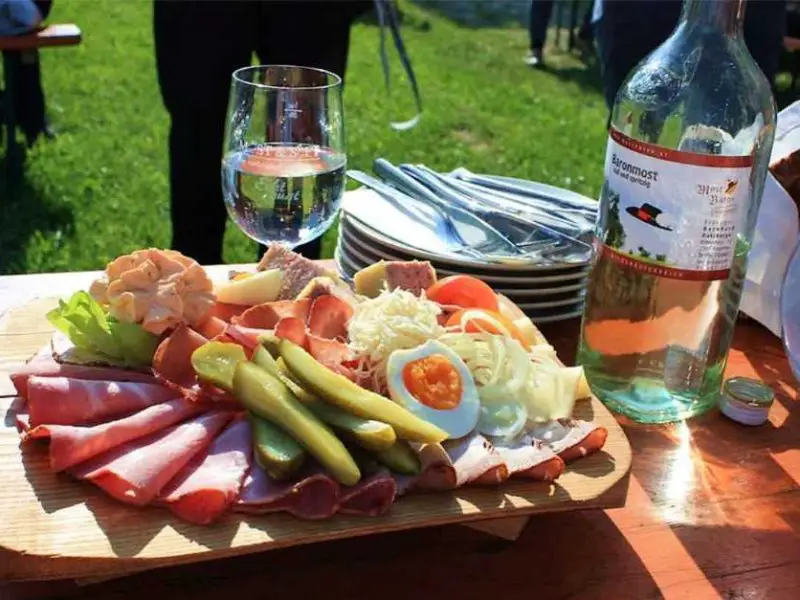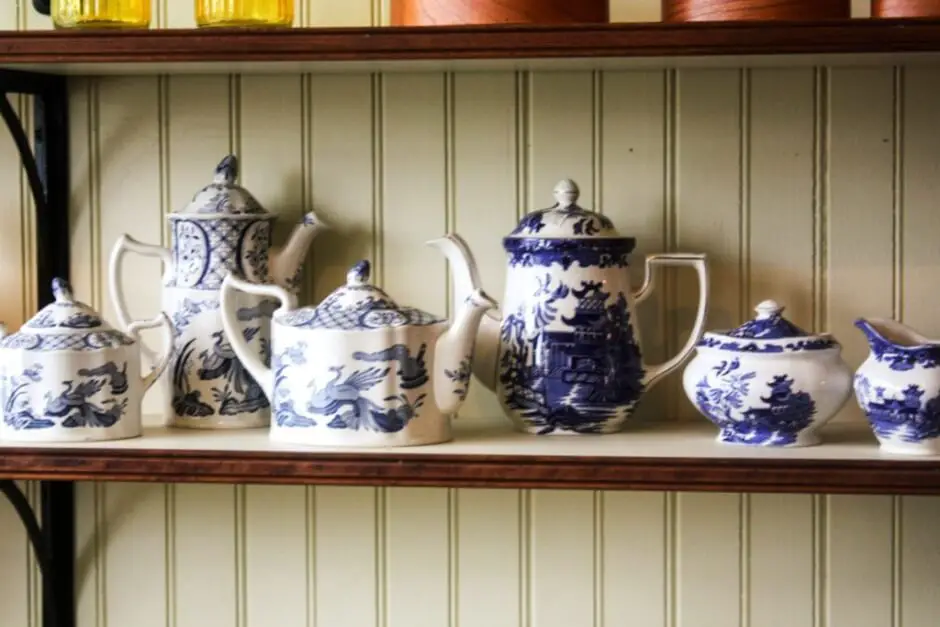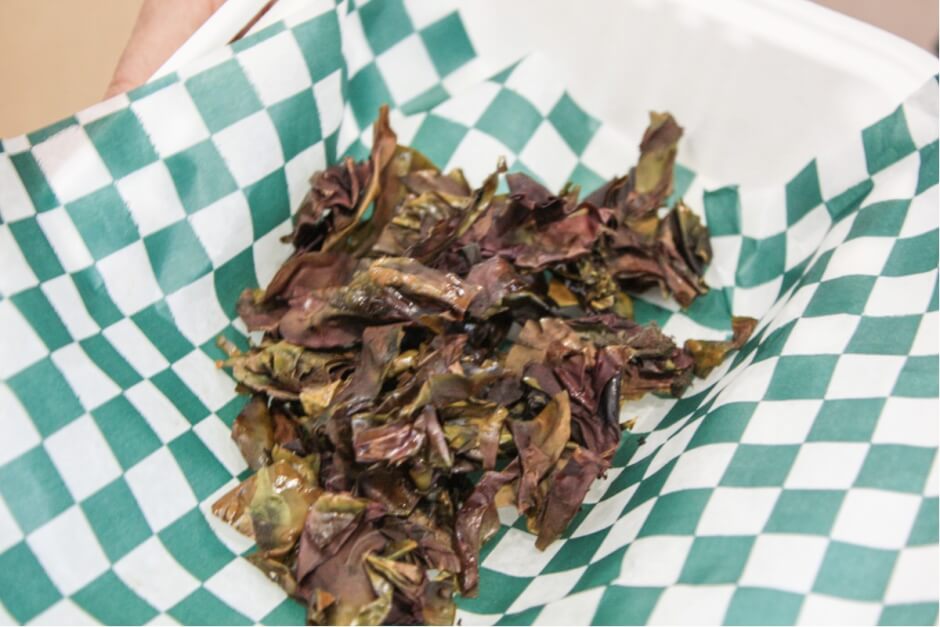New Brunswick Road Trip in the Footsteps of the Acadians
Do you know this feeling? You travel through a country and discover interesting aspects along the way that you would like to know more about? That's what happened to us on our previous trips through New Brunswick. We noticed New Brunswick sights that deal with Acadian history. This made us curious about Acadian culture in New Brunswick. So we went on a New Brunswick road trip in the footsteps of the Acadians.
Travel Tips for Acadian Tour through Canada
What happened to the Acadians, what fates did they experience, and above all, are they still around in the provinces of Nova Scotia, New Brunswick and Prince Edward Island? These were questions that have been bothering us ever since. Reason enough to dedicate part of our trip through New Brunswick this year to this topic. So we set off on a cultural trip to Canada. Our goal was to experience Acadian traditions.
Best Acadian Places in New Brunswick
We came across a surprising number of places where both the Acadian heritage and the Acadian culture are still very much alive and present. We will introduce these to you here. Discover with us the fascinating history and culture of the Acadians in New Brunswick.
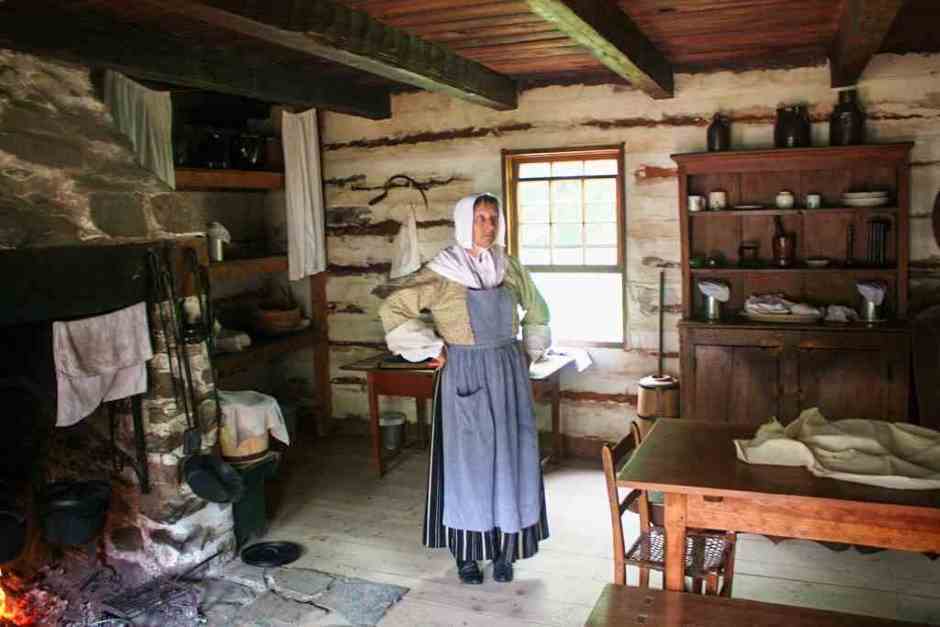
The Acadians: History and Background
The history of the Acadians begins in the 17th century, when French settlers arrived on the coast of North America. They settled in the region that is now known as the Canadian provinces New Brunswick, Nova Scotia and Prince Edward Island This community developed its own identity and way of life. Unlike other colonies, the Acadians lived peacefully with the Mi'kmaq, the indigenous peoples of the region.
For decades, their isolation shaped Acadian culture. Instead of military fortresses, they built small farms and lived in autonomous villages. But this peaceful existence ended abruptly in 1755 with the “Great Expulsion“ British troops forced thousands of Acadians to leave their homeland. Families were separated and scattered across the coasts of North America. Many fled as far as Louisiana, where they became known as “Cajuns.”
Today, most Acadians live in Canada, especially in New Brunswick, and actively maintain their culture. They often speak French and celebrate their roots through music, festivals and traditional cuisine. The history of the Acadians is a symbol of resistance and community. Acadian culture remains a living part of Canadian identity. Visitors who follow in the footsteps of the Acadians discover a community that has never forgotten its past.
Sights and activities in New Brunswick in the footsteps of the Acadians
New Brunswick is full of places where visitors can experience the history of the Acadians. A particular highlight is the "Village Historique Acadien", an open-air museum that recreates the life of the Acadians from the 18th to the 20th century. Those who want to visit the Village Historique Acadien can discover the traditional crafts, cuisine and daily activities of the Acadians. Another popular place is "Le Pays de la Sagouine". This place combines theater, music and the unique Acadian way of life. Here visitors experience the culture through performances and interactive experiences.
New Brunswick also offers numerous Acadian festivals in Canada throughout the year. The most famous is the Tintamarre Festival, which is celebrated every year on the national holiday of the Acadians. Here, people parade through the streets with noise and colorful costumes to keep their culture alive. Such events offer insights into the rich tradition of the region. If you are looking for travel tips for New Brunswick, you should not miss these sights and experiences.
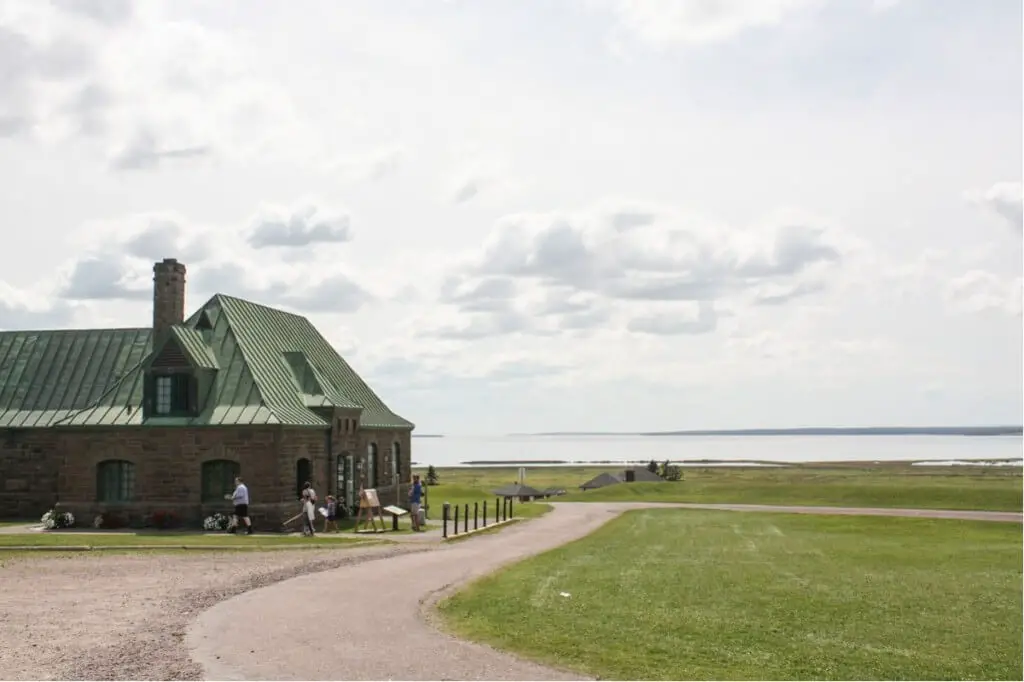
Fort Beauséjour
The fort is located just five minutes by car from the border between Nova Scotia and New Brunswick, not far from Highway 2 (TransCanada Highway). A detour there is worthwhile not only because of the historical background, but also because of the beautiful view of the Bay of Fundy that you have from the hill on which the fort stands.
Our guide Darrell explains to us that the fort was built on this site in 1751. The Isthmus of Chignecto, the narrow land bridge connecting Nova Scotia and New Brunswick, was an important connection between the Bay of Fundy and the Atlantic coast, which was already used by the Indians and later by the French colonists.
"The British took it a few years later - in June 1755 - after only two weeks of siege. The French mainland sent no support, and so the small garrison could not be held."
From the cannon positions in front of the fort we can look out over the small border river with the unpronounceable name Missaquash, which separates the two provinces. "The English came over these hills," says Darrell, pointing south.
More information about Fort Beauséjour can be found here.
We pay a visit to the visitor center, if we want to visit yet another museum, which deals with the history of the Akadier, and only a few kilometers away:
Monument Lefebvre in Memramcook
Just thirty kilometers further north is the town of Memramcook, also known as the "cradle of the Acadians," as this is where the first Acadians arrived in Canada in 1700. The inhabitants of the small town, like other Acadian communities, were to be expelled from their homeland in 1755.
However, the inhabitants of Memramcook hid in the woods on the advice of their missionary. With the help of the local Micmac Indians, they managed to drive the English out of here, albeit with heavy losses, and 200 families escaped deportation.
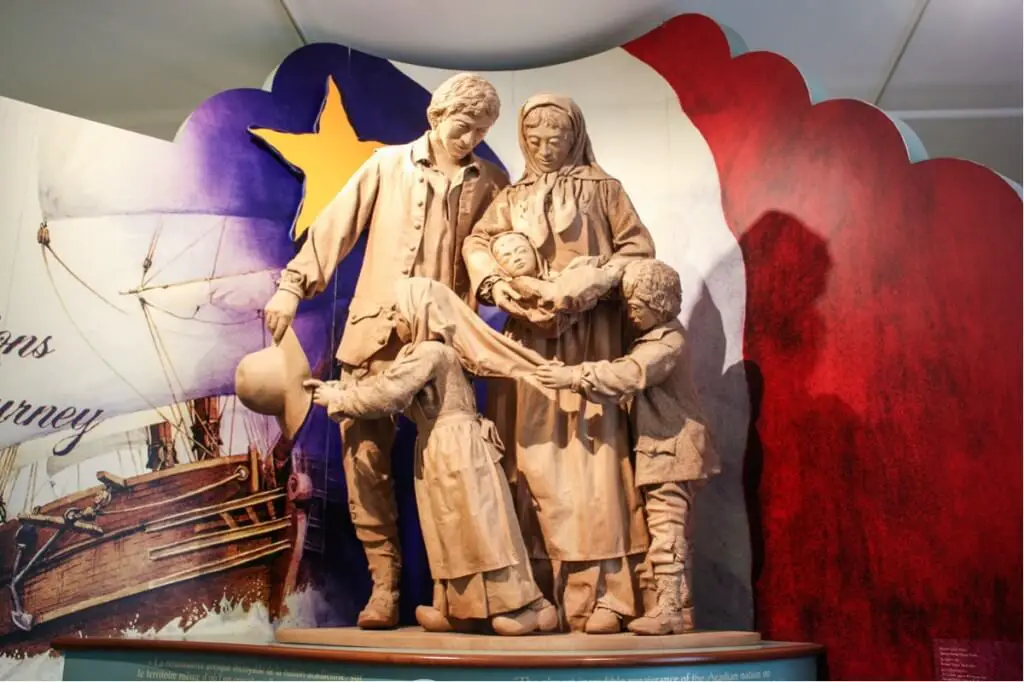
The town thus looks back on an uninterrupted Acadian history and became the starting point of the Acadian Renaissance, which began in 1864 with the opening of St. Joseph's College, one of the founding colleges of the University of Moncton. It enabled French-language instruction at a higher education institution in Atlantic Canada for the first time.
The first Acadian National Assembly was held here in 1881. In 1966, the college merged with the University of Moncton. Since then, the building has been a museum that shows both the history of the deportation and - and this is the interesting thing - the development of modern Acadian self-image and self-confidence since the end of the 19th century.
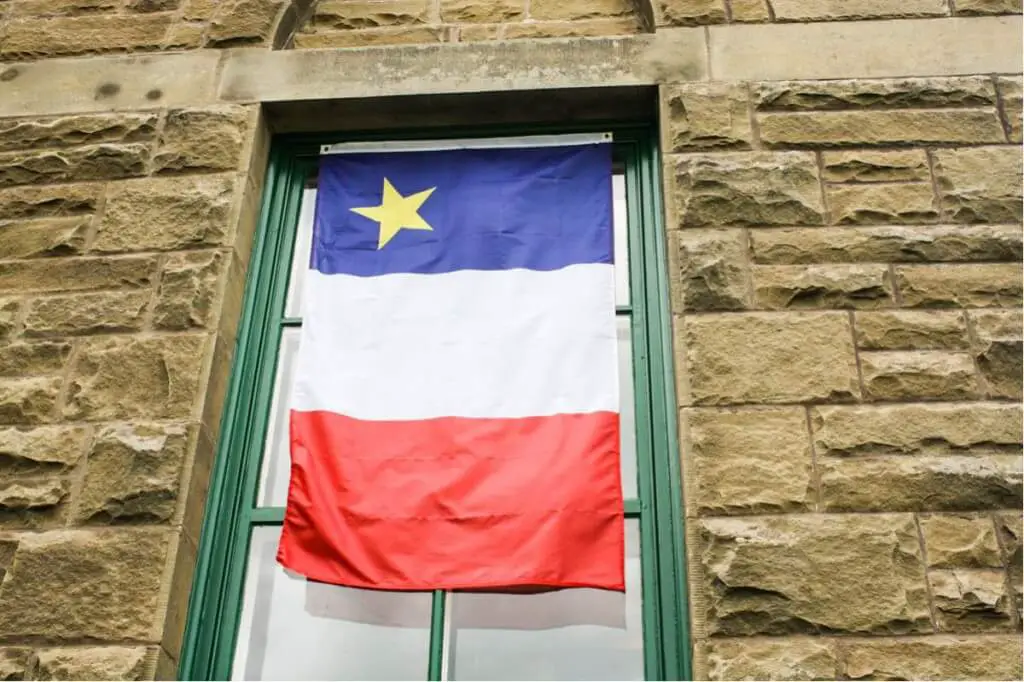
We learn about Camille Lefebvre's founding of the college, but also about Louis J. Robichaud, the first Acadian Prime Minister of New Brunswick, who, together with his English successor Richard Bennett Hatfield, was strongly committed to the integration of the Acadians.
New Brunswick thus experienced something like a top-down Acadian revolution, because the Equal Opportunities Act enacted by Robichaud brought education, health care, welfare and justice under state control, thus giving Acadians the same access to these services as the English-speaking population of New Brunswick had.
Monument Lefebvre
480, rue Centrale,
Memramcook,
N.-B.E4K 3S6
Le Pays de la Sagouine – Experience culture through theater and music
The next day we visited Le Pays de la Sagouine in Bouctouche, an Acadian experience like no other. And I mean that literally. It is difficult to describe what this facility is - it is not a museum, but rather an experience offered on the grounds. An experience that brings the visitor as close as possible to the Acadian way of life and the soul of this people group.
At the visitor center, we are welcomed by "Dorine", one of the actresses who portray a particular character. Le Pays de la Sagouine is based on a play by Antonine Maillet that tells the story of the washerwoman Sagouine. This play is performed on site.
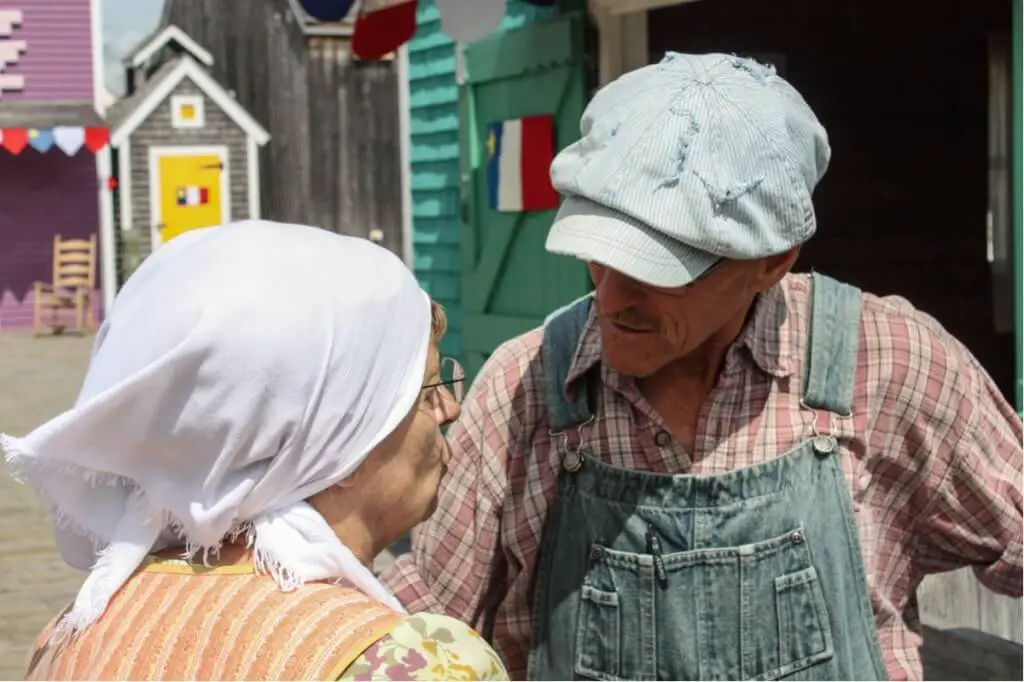
But Le Pays de la Sagouine is much more than that: on an island in the bay of Bouctouche, various houses have been built that depict the life of the Acadians of yesteryear. Visitors can take part in kitchen parties there.
You can learn how to use spoons to beat the beat of Acadian dances, listen to Acadian music groups, and hear stories of the sea in Chiac, the dialect of the Acadians from the border region between English and French-speaking parts of New Brunswick, which often requires you to know more English than French.
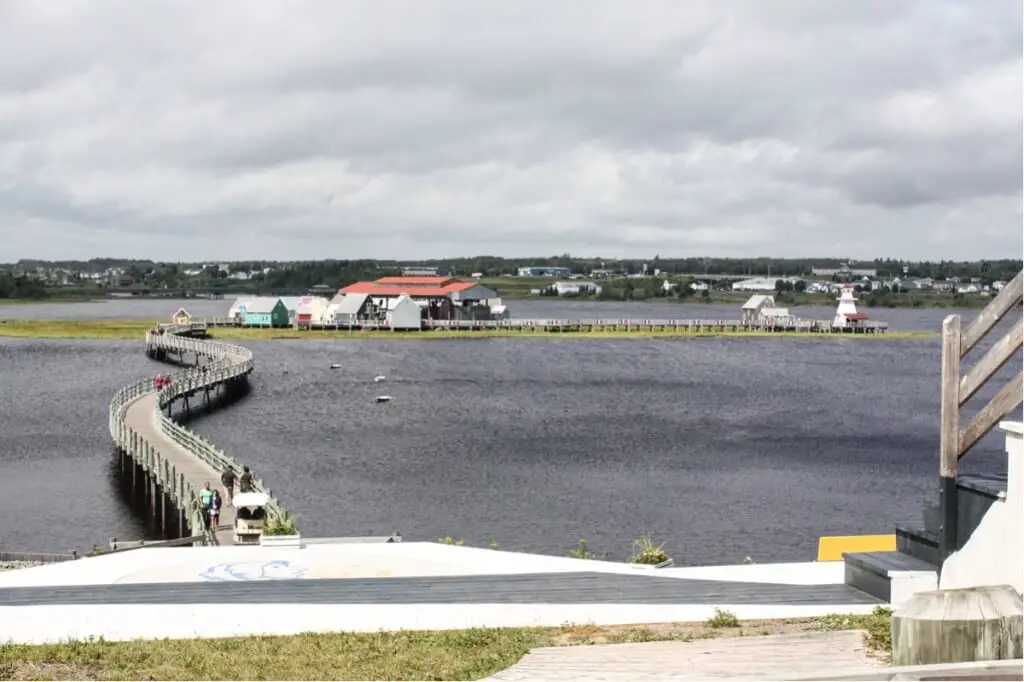
At the Ordre du Bon Temps Restaurant, we make our first acquaintance with the simple dishes of the Acadian cuisine. Potatoes, salted cod and maple syrup play a major role in this. Maybe not for everyone, but try it once before.
Le Pays de la Sagouine
57, rue Acadie,
Bouctouche, (N.-B.)
E4S 2T7 Canada
Village Historique Acadien – A Living Open-Air Museum
Our next destination on our journey in the footsteps of the Acadians is the Village Historique Acadien in Caraquet. In this museum village we follow the history of the Acadians in New Brunswick from 1770, i.e. from the time after the deportation. For this purpose, Acadian houses from all regions of New Brunswick have been rebuilt here in an environment that looks like it did when the original inhabitants still lived there.
Ancient Crafts of the Acadians
We watch the "residents" spinning and weaving, ask the shop owner about the current prices and what goods she has on offer, and the village innkeeper explains to us that the schnapps has to be sold in a different room to where it is drunk. We meet lumberjacks who deliver the felled wood in a horse-drawn carriage to one of the farmhouses, where it provides warmth in the open fireplace on the rainy day on which we visit the village.
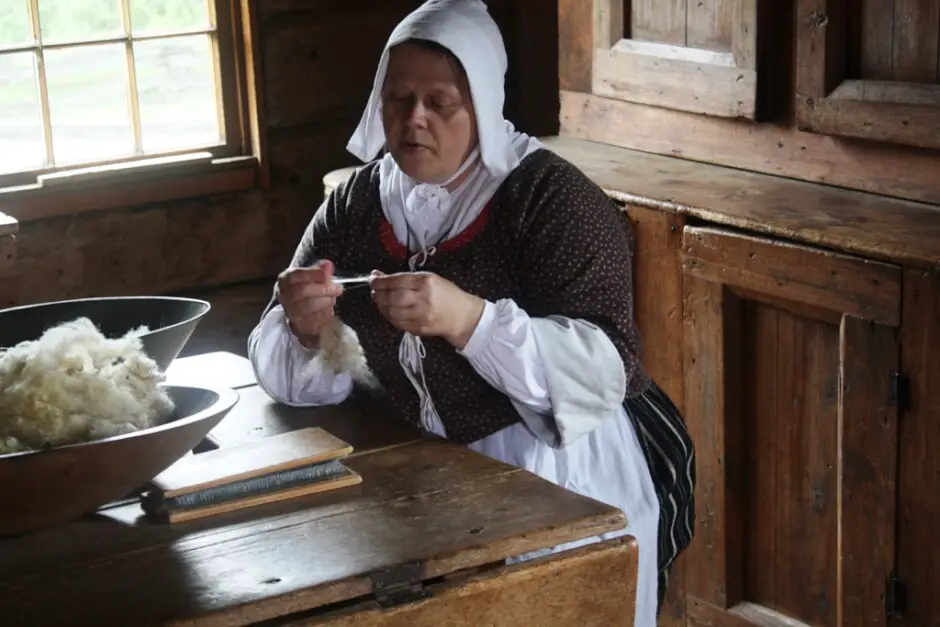
In the village pub there are Acadian dishes to choose from: bean stew, potato soup, sugar cake or biscuits. For drinking, there's cranberry juice, water or tea. Lean diet, from which the Acadians had to feed for a long time.
It was only in the 20th century that we suddenly discovered sewing machines, a cast iron oven, carpets and other modern “bells and whistles” that made life easier for the Acadians. Next to the hotel on the main street (where you can also spend the night), there is an old gas station, and in the barns of the houses there are no carriages, but cars. Thus, modernity also moved into the Acadian households, albeit somewhat later than with the English-speaking neighbors.
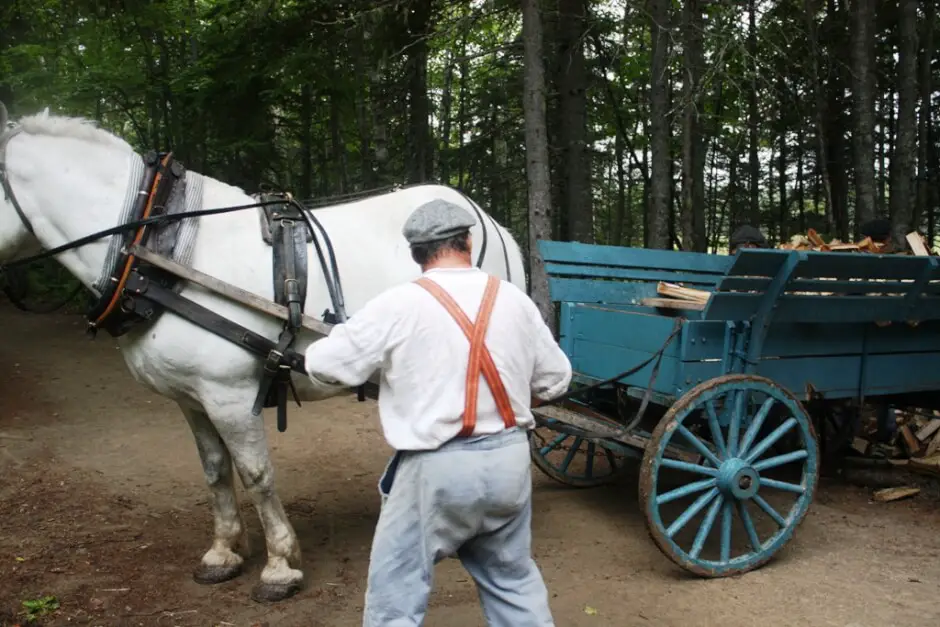
A walk through the historic village of the Acadians illustrates how humble these people were and how proud they are of their culture and way of life, for which they have taken many hardships.
Village Historique Acadia
5, Du Pont Street
Bertrand (N. -B.)
E1W 0E1 Canada

Acadian Celebrations and Festivals in Canada: Tintamarre and More
Today's Acadia is most alive during the Tintamarre, a custom that became established in Acadian communities in the 20th century. The Archbishop of Moncton, Norbert Robichaud, called on the Acadians to hold a Tintamarre for the first time in 1955 on the 200th anniversary of the expulsion.
A Tintamarre is a celebration with a lot of noise and bell ringing, for example at peasant weddings in France. In 1979, the second Tintamarre was held in Caraquet to mark the 375th anniversary of the founding of Acadia. And it has now become an integral part of the Acadian national holiday. Like the Acadian flag and the anthem Ave Maria Stella, it is one of the symbols of Acadian culture.

This is how the Acadians celebrate at Tintamarre
At 18.00 p.m. we stand on the main street of Caraquet with thousands of people dressed and painted in the Acadian national colors, waiting for the church bells to start ringing. This is the starting signal for a noise spectacle that is unparalleled. At exactly six o'clock in the evening, all hell breaks loose on the main street of Caraquet.
People who until then had been walking quietly along the street, albeit in costumes, suddenly start screaming, banging spoons on cooking pots, spinning rattles, banging drums, ringing bicycle bells and making many other things ring, honk or clatter.
Everyone smiles at us - despite the pouring rain - and the beautifully masked people pose for us without being bothered by the water falling from the sky. They are celebrating, the Acadians: their identity, their culture and their way of life. And what does a little cloudburst matter? They have survived hundreds of years of discrimination after the expulsion and are still - or again - a group to be reckoned with in New Brunswick!
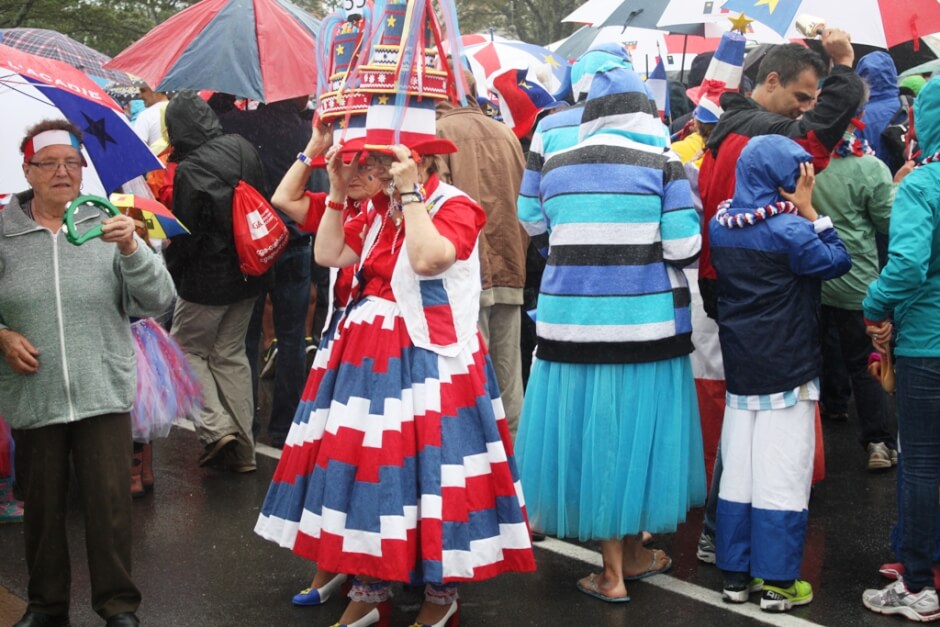
The Acadians' Tintamarre festival takes place annually
The Tintamarre Festival is part of a two-week celebration of the Acadians' national holiday. The Grand Tintamarre takes place in a different location every year and is organized by the Societé Nationale de l'Acadie organized.
There are other sights or experiences where you can experience the Acadians in their element in New Brunswick. We got to know them and returned with the feeling of having learned and discovered more about this ethnic group and their way of life. Perhaps you would enjoy getting to know New Brunswick in the footsteps of the Acadians just as much?

Cultural Experiences: Food, Music and Traditions
Anyone visiting New Brunswick will experience the culture of the Acadians particularly intensively through food, music and living traditions. Acadian music is an important part of everyday life and reflects the history and way of life of this community. Influenced by French, Celtic and indigenous influences, it often combines fiddle, accordion and guitar to create cheerful melodies. Dances such as the "Quadrille" or "Jig" invite you to join in and bring people of all ages together. Anyone planning a Canadian cultural trip should therefore not miss an Acadian dance evening.
The region also has a lot to offer in terms of cuisine. Traditional Acadian cuisine was developed from the ingredients that were available in this region. Particularly well-known is the "fricot", a hearty stew made from chicken or pork with potatoes and herbs. This dish symbolizes the roots and sense of community of the Acadians. For those who want to learn more about food and drink in New Brunswick, there are many such traditional dishes to try in local restaurants.
A trip to the Acadians offers many opportunities to discover these cultural treasures. From music festivals to dance events to traditional dishes, visitors immerse themselves in a world that is still strongly influenced by its roots. Whether with a plate of fricot or dancing to Acadian music, immersing yourself in Acadian culture is an unforgettable experience.
Map of the Acadians in New Brunswick
Practical travel tips for New Brunswick
Anyone planning a New Brunswick vacation should carefully consider the travel time and accommodation. The best time to travel to New Brunswick is between May and October. During these months, temperatures are mild and nature is in full bloom. Autumn also offers impressive foliage colors. Winter is cold and snowy, ideal for winter sports enthusiasts.
There are various options for getting there. The closest international airport is the Greater Moncton Roméo LeBlanc International Airport. The airports in Halifax and Fredericton are also easily accessible. Rental cars are the most practical means of transport for exploring the region. New Brunswick also has a bus network, but rural areas are best reached by car.
There are many options when choosing accommodation in New Brunswick. If you want to experience Acadian culture first hand, you can stay in small guesthouses and bed and breakfasts. These accommodations often offer a glimpse of local hospitality. In the larger cities such as Moncton or Fredericton, there are hotels in various price ranges. If you prefer nature instead, you will find numerous campsites and cabins in the region's national parks.
Planning a New Brunswick vacation also means being prepared for weather changes. Layered clothing is advisable, as the weather can change quickly. If you are flexible and prepared, you will be able to enjoy the region to the fullest.
Conclusion: Why a journey in the footsteps of the Acadians is worthwhile
A journey in the footsteps of the Acadians in New Brunswick is a unique experience. Visitors learn more about the eventful history and the vibrant culture of this community, which has maintained its traditions for centuries. Whether visiting the "Village Historique Acadien", attending a festival such as Tintamarre, or sampling Acadian cuisine - everywhere you go you can feel the deep roots of the Acadians in their homeland. The rich mix of music, dance and cuisine creates an authentic picture of New Brunswick's cultural diversity.
Discovering Acadian culture not only offers travelers insight into a historic community, but also into the everyday lives of Acadians today. Those who explore the region discover a strong community that lives and shares its history. Such a trip is inspiring and leaves a lasting impression.
For anyone who wants to discover Canada off the beaten track, New Brunswick offers an extraordinary opportunity. The region invites you to experience history up close and enjoy the beauty of nature. Plan your trip now and get to know the fascinating world of the Acadians!
Learn more:
- The Cabot Trail in Nova Scotia
- Acadia on the Atlantic coast of Nova Scotia
- The Village Acadien in Caraquet
- Also in Quebec you can discover traces of the Acadians
External sources:
FAQs
When is the best time to travel to New Brunswick?
New Brunswick is a beautiful destination year-round, but the best time to visit depends on what you want to experience. If you want to enjoy the national parks, beaches and historic sites in all their glory, summer is the best time to visit, from June to September. Temperatures are pleasantly warm, and there are numerous festivals that are particularly exciting for travelers. Summer is also the peak season for the Village Historique Acadien and other cultural sites. If you want to experience the breathtaking Indian summer, autumn is the ideal time, especially the months of September and October. The autumn colors of the forests are spectacular and a real highlight. Winter, on the other hand, beckons with winter sports and Christmas markets, although temperatures can get quite low. Spring and autumn are often quieter and cheaper, with slightly fewer tourists.
What is the best way to get to and around New Brunswick?
The most convenient way to get to New Brunswick is often to fly to Moncton, Fredericton or Saint John, as these cities have airports with connections to major cities in Canada and the USA. If you are travelling within Canada, you can also travel by train or car. Once you are there, it is advisable to rent a car to explore the region flexibly, as many attractions are located outside the cities. The province has well-maintained roads and many scenic routes that are particularly worthwhile. Alternatively, you can use regional buses for shorter journeys, but for visiting rural or historical sites, a car is practically essential.
What typical dishes should I try in New Brunswick?
New Brunswick has a strong Acadian and maritime cuisine that is well worth trying. Lobster and seafood are the highlight of many restaurants along the coast, especially in towns like Shediac, known as the "Lobster Capital." Be sure to try lobster Acadian style, such as the traditional boiled lobster dinner. Fish and seafood chowder and blueberry dishes are also regional specialties, as blueberries are grown in abundance here. Acadian culture has other delicacies such as "poutine râpée" (a type of potato dumpling) or "fricot" (a stew) that are not to be missed to experience the authentic regional cuisine.
Are there any special safety or health precautions in New Brunswick?
New Brunswick is generally a very safe region for travellers. However, there are some tips that may be helpful. Since the region is rich in nature and wildlife, it is advisable to be cautious when hiking or camping and to pack food carefully so as not to attract wild animals. Especially when going to remote areas or national parks, it is advisable to stay on marked trails and pay attention to local advice. If you want to swim in the sea or lakes, be aware of the tides and currents, especially in the Bay of Fundy, which is known for extreme tidal fluctuations. No special vaccinations are required, but international health insurance can be helpful to cover medical care.
What are the most important cultural behaviors I should be aware of?
Acadian culture plays an important role in New Brunswick and people are proud of their French Canadian roots. It is appreciated if you respect the culture and show interest in it. Try to use a few French words like "bonjour" or "merci" as this often goes down well, especially in predominantly Acadian areas. The people are very friendly and helpful and hospitality is very important. In rural areas it is also common to make a little small talk. Always ask permission before taking photographs in museums or cultural sites as photography may be restricted in some places.
Travel Arrangements:
Parking at the airport
Here you can reserve your parking space at the airport.
Arrival:
Compare and book flights here* (Advertisement). Air Canada, Condor and Icelandair fly from Germany to various airports in eastern Canada. There you can then rent a rental car or a motorhome for your onward journey.
Car Rentals:
Cheap car hire - book quickly and easily!
Hotels:
Hotels in New Brunswick * and on the Acadian peninsula * you can, for example, book through our partner booking.com.
If you book through one of these offers, we receive a commission, which we use to run this blog.

Do you know this?
- Village Historique Acadien Caraquet
- Le Pays de la Sagouine
- Acadia on the Cabot Trail in Cape Breton, Nova Scotia
- Lloret de Mar, Costa Brava: Catalan festivals and traditions
- Which rain jacket is the best?
Source: own research on site with the kind support of Tourism New Brunswick. We would like to thank you very much for this. However, our opinions remain, as always, our own.
Text: © Copyright Monika Fuchs and TravelWorldOnline
Photos © Copyright Monika Fuchs as well as TravelWorldOnline and Pixabay
Video © Copyright Petar Fuchs and TravelWorldOnline
